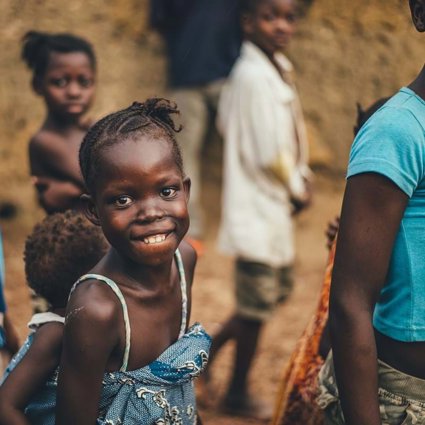
Education in Ghana: Moving forward
This lesson explores education in Ghana
Key questions
-
What is the education system in Ghana like?
-
How does Ghana's education system have an impact on its people and also on the country's future?
What is the education system in Ghana like?
Presently, Ghana has 18,530 primary schools, 8,850 junior secondary schools, 900 senior secondary schools, 28 training colleges, 20 technical institutions, four diploma-awarding institutions, six public universities and over 10 private universities. Most Ghanaians have relatively easy access to primary and secondary education. However, the cost of school fees, uniforms and school equipment, alongside the need for children to support their families by working has meant that the fluctuating numbers in education remains a problem that the government is determined to deal with by various measures.
A new Education Plan was finalised in 2007 and the aim is to provide universal free primary education by 2015 in line with the Millennium Development Goals. A key issue for the country has been the fact that as the various measures have been successful in attracting more children into education, the shortage of teaching rooms, equipment and teachers has become even worse.
Starter
Study the two photos in the education photo pairs slideshow. They both show aspects of education in Ghana.
What do the photos tell us about education in Ghana?
Write down two questions that you would like to ask about each photo
Now share your answers with the rest of the class.
Main Activity
My typical school day
Read the Ghana stories of my school day document which tells you about typical school days for school students in Ghana.
Select a couple of the stories to concentrate on and think about how a typical school day for you is similar and how it is different. Write a paragraph or two describing your own day from the time you wake up to the time you go to sleep. Explain to the reader how you feel as well as what you are actually doing.
Now describe two things that are similar and two things that are different when you compare your day to that of a student in Ghana.
Once students in Ghana have reached the age of 16 years, most will start work (if they haven't already). Those who carry on their education tend to do vocational courses.
-
What is a vocational course?
-
In a country where over half of the people still work on the land, what sort of practical work would be helpful to them?
-
For those living in the large towns and cities, what kind of practical courses would help them find jobs?
The Ghana School Feeding Programme
Many children in Ghana do not attend school and there are many different reasons for this. One of the biggest problems in the past was that parents had to pay a fee plus they had to buy a uniform, books, pencils, etc. Now the government in Ghana has made education free, but parents still have to buy uniform, books and equipment.
Why do you think that the poorest people in Ghana, who are mostly farmers, cannot afford to send their children to school?
The government has also been experimenting in some areas of the country with a School Feeding Programme which provides all the children with a free school lunch.
You can read about the School Feeding Programme by following these links:
What effect do you think this project has had on school attendance in these areas?
-
Why has this happened?
-
Can you think of any problems that might be caused by encouraging more children to come to school?
-
How might a School Feeding Programme help the local farmers near a school? Who else might benefit?
Plenary
In the year 2000, representatives of the governments of 189 countries around the world came together at the United Nations Millennium Summit to agree a series of eight ‘Millennium Development Goals' to try to end poverty by 2015. You can find out more about the targets set by visiting the UN website.
The second of these goals was to achieve universal education by ensuring that all boys and girls complete a full course of primary schooling.
You will already know from the tasks you have completed this lesson that not all primary aged children in Ghana attend school. The table below shows that since 1991, there has been much progress towards the 100% target.
Ghana - national data for primary school attendance
(Millennium Development Goal = 100%)
-
1991 = 53.5%
-
1999 = 57.4%
-
2000 = 60.9%
-
2001 = 56.1%
-
2002 = 58.9%
-
2003 = 61.7%
-
2004 = 57.8%
-
2005 = 64.7%
-
2006 = 64.5%
-
2007 = 71.9%
However, studying the Ghana primary school attendance document reveals that there is considerable variation between different ages and groups of children.
-
Which children are most likely to attend school in Ghana?
-
Which children are least likely to attend school in Ghana?
What are your ideas for achieving the 100% primary school attendance target in Ghana? Share your ideas with the rest of the class.
File nameFiles
File type
Size
Download